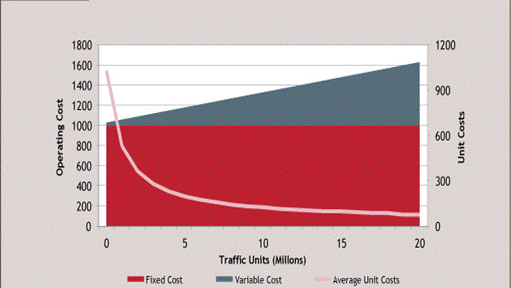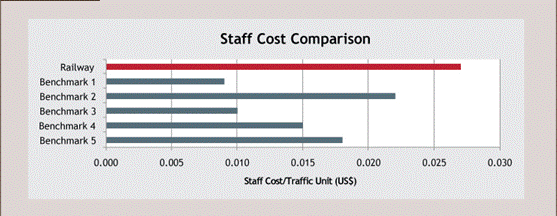Guidelines for The Preparation of A New Business Plan for the Sri Lanka Railways.
By Eng. Dhammika JayasundaraCurrent national debate about increasing national debt burden need careful attention of all the Engineers. We need to shift from current simple focus on spending more and toward a focus on spending. This is very important for the investments in the transport sector.
Investing in infrastructure is not enough; maintaining it also matters. Ensuring a steady flow of resources for operations and maintenance is a necessary condition for the success. Good maintenance also generates substantial savings, reducing the total life-cycle cost of transport infrastructure more than 50 percent.
Proper planning is essential for transport investments. The long-term environmental and distributional impacts of current choices should be assessed, and solutions that prevent future lock-ins into unsustainable pathways should be preferred.
If the analysis shows that the transport system would not be affordable if traffic is lower than projected, then the system should be designed differently or complementary policies should be adopted, before implementation.
Citizens mobility demand can be supplied at relatively low infrastructure investment costs and low CO2 emissions with a shift toward more rail and urban public transport if accompanied by policies that ensure high rail occupancy and land-use policies that densify cities.
But “Electrification of the fleet needs to be paired with decarburization of electricity production, otherwise these reductions in tank-to-wheel emissions could be offset by increased emissions from electricity production” (Fay and others 2015).
Inefficiently managed railways, and railways with light usage would not be so environmentally (or economically) efficient. Railways with very light axle-loads can be less energy efficient than road transport for freight because rail freight wagons typically weight much more than highway vehicles. High-speed trains with low load factors can be less efficient than even automobiles or airplanes. Environmental and efficiency benefits depend upon an efficiently designed and managed railway system. Of course, this is true of other transport modes as well.
Reforming Railways
Defining goals and objectives of railway reform is a crucial first step in developing and defining a reform program. In the initial stages, railway reform requires a set of clear and prioritized goals that specify desired outcomes of the reforms.
For all modes of transport, neither infrastructure nor service capacity can be stored—the unused train path, aircraft take-off slot, or shipping berth is lost. Similarly, when trains, ships, aircraft, or trucks travel with only partial loads, the unused capacity is lost. Therefore, higher vehicle productivity is crucial to better commercial performance for all the transport service providers, just as higher infrastructure utilization is crucial to better commercial performance for the infrastructure provider.
Competition from road vehicles, together with capacity that cannot be stored, points to the importance of service design, marketing strategies, and pricing policies to maintain and increase capacity utilization. Crucially, railway transport should be viewed as a service industry of differentiated products tailored to specific markets, rather than a ‘utility.’
Finally, all modes of transport have external effects on the environment. But due to low running friction between metal wheels and rails, rail transportation exhibits a distinct advantage over the other modes of transportation in fuel economy. Also with the electric train running much greener carbon foot print can be obtained with a more renewable energy mix.
Modus operandi of railway business has changed during last 150 years from private sector startup initiatives to public owned monopolies and then again back to private sector management under franchising, concession or outright privatization. Today India and china are having public monopolies while USA and Canada are having successful private railways.
In Sri Lanka we are having vertically integrated railways where same organization is running trains and looking after the infrastructure. EU countries are having vertically separated railways where railway operations and infrastructure management are done by two separate organizations. As per EU guide lines any country joining the community needs to adhence to this guide line. This vertical separation approach is becoming more popular and many countries in south America also have started following it.
Sri Lanka Railway experienced a century of transport monopoly in Sri Lanka aided by some favorable transport policies of the government. But after the second world war with the expansion of road network and increase in private vehicle ownership, Sri Lanka railway (SLR) today is in dire need of a new business plan to prosper.
Therefore, proper understanding of the railway technologies and operational characteristics are necessary for the preparation of a meaningful new business plan or a master plan.
Railway line capacity.
Trains are usually heavy and low friction between the wheel and the rail that make them energy efficient also make them hard to stop. The higher the speed of the train, and the heavier the train, the longer it takes to bring it to a stop. Similarly, it takes a long time and distance to bring a heavy train out of a passing siding and up to track speed.
Railway signals are spaced at the breaking distance of the trains running on the line. Therefore, trains can follow each other no closer than the stopping distance for the longest breaking distance trains Large speed differences between trains tend to limit line capacity even on double track, since trains have to switch tracks to get out of each other’s way.
Therefore, running trains with similar acceleration and breaking characteristics in a railway line is very important for the efficient train operations. If trains with different characteristics has to be run on the same line, selecting different time segments for them would be efficient. This situation would be encountered clearly when electric trains and diesel powered trains have to use same lines to reach city center. There are many software packagers like Open track which can be used to simulate and optimize utilization of the railway infrastructure for the train running.
Railway Costing.


Numerous economic studies have demonstrated that railways exhibit economies of density.
Their long-run average cost curve tend to slopes downward. Unit costs decline as output rises on the railway line as the fixed cost of providing track is spread over more and more traffic units.
But when combined with the impossibility of storing unused train paths, they create a convincing case that “Railway infrastructure networks’ financial sustainability depends critically on high traffic volumes”
Railways cost structures are at their most highly competitive when railways can operate large trains, well-loaded with traffic, over a heavily used network, by lean organizations.
Train size and payload provide train operating economies, train density plus heavy network use provide infrastructure economies and lean organization structure yields administrative overhead economies.
Although this seems obvious, many countries maintain railway policies and business models that openly defy this reality.
Railway freight


The chart above compares the cost of transporting containers by rail (rail-inter modal) with similar road transport movements in the United States. For distances greater than 500 kilometers, rail transport of containers costs about 20 percent less and the cost advantage continues to increase as distance increases. Local handling adds cost, and changing modes at a terminal adds time to rail movements so rail may not have such a significant advantage for domestic movements, especially shorter movements.
Cost comparisons between road and rail transport for general commodities are difficult to obtain,
but the advantages of rail transport of bulk commodities such as coal, ores and grain, would be much greater than for container transport
Railway Bench Marking.
Benchmarking can be used for the evaluation of the performance level of a railway organization. In railway business cost of labor and cost depreciation of the assets counts up to 50% of the total cost involved. Also around 60% of the cost involved in the railway business can be considered as fixed cost. Therefor maximum utilization of the railway infrastructure and rolling stock is needed to achieve higher productivity. Railways can compare their infrastructure, rolling stock and labor productivity by benchmarking with other railways.

Productivity of the railway infrastructure can be measured by the utilization of the tracks for the train running. Annual train kilometers per track kilometer of the network would be a good indicator of the utilization. Similarly, average train kilometers per day would give good indication about their utilization.
Railway labor productivity can be compared by the cost of labor for a passenger kilometer.

Therefore, any attempts for the reinvigoration of existing railways like Sri Lanka Railways must be done with due care. Understanding railway business characteristics and learning from the experience of the other railways is necessary for any successful attempt in restructuring or implementation of a master plan.
Bibliography;
- Railway Tool kit: World Bank
- Management: Peter F Drucker
 Eng. Dhammika Jayasundara
Eng. Dhammika Jayasundara
Chief Engineer Signal & Telecommunication
Sri Lanka Railways.
B.Sc. Eng., MBA, FIESL
